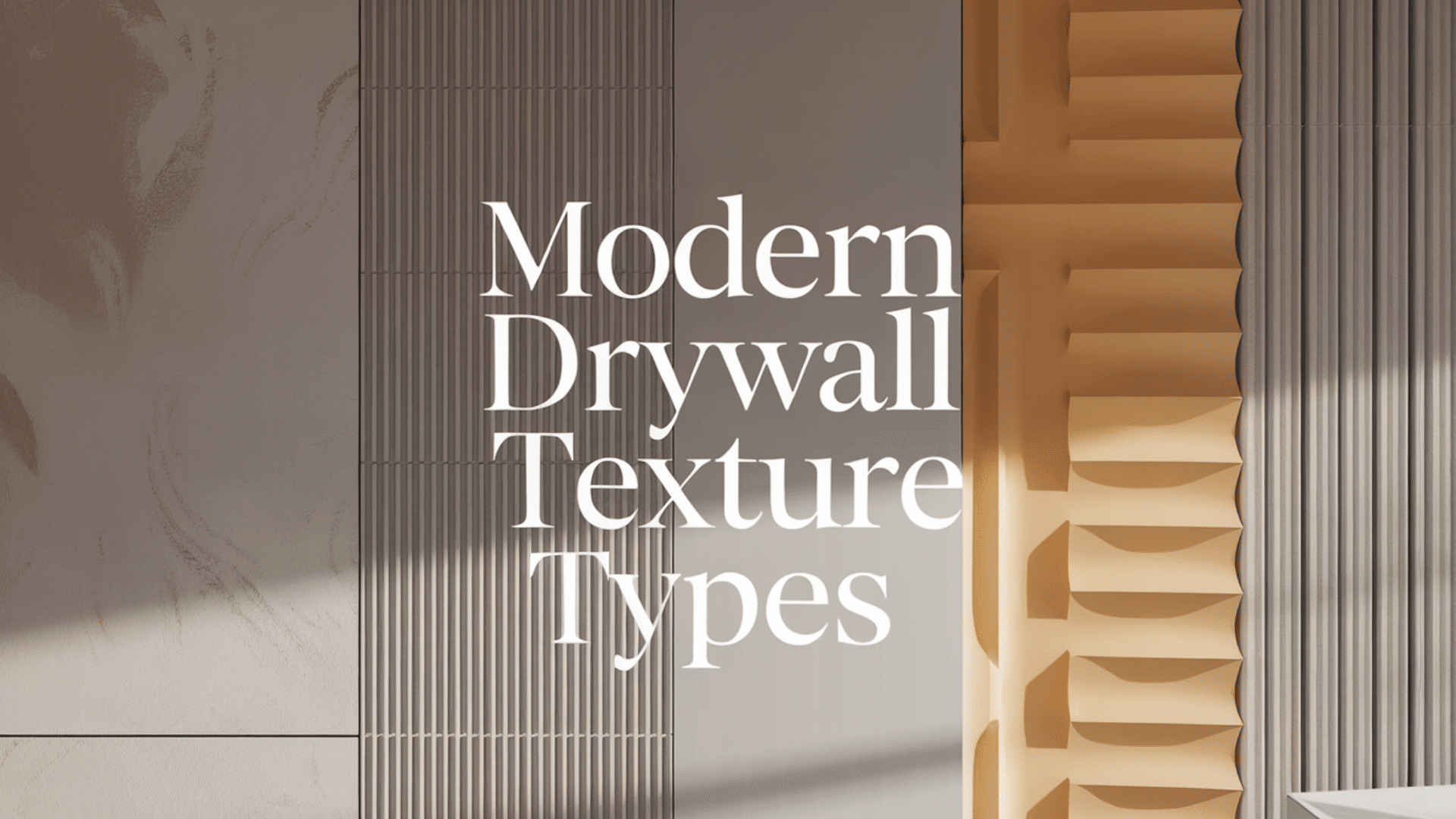Drywall textures play a big role in how a room looks and feels. They give walls a finished look and help hide small flaws.
In modern homes, texture also adds style. A plain wall can feel flat, but texture gives it shape and interest. Some textures are smooth and simple, while others are bold. The right choice can change the whole feel of a room.
Drywall texture also helps with light and sound. It can soften echoes and make walls look more complete. This blog will discuss popular drywall texture types used in modern homes. Each one has its own look and benefits.
Use this guide to find the right texture for your space. It will help you pick a style that looks good and fits your home’s needs.
Modern Drywall Texture Types
Modern drywall textures can change the way a room feels. Some styles are bold, while others are soft and quiet. This section covers different texture types that work well in today’s homes.
1. Smooth Finish
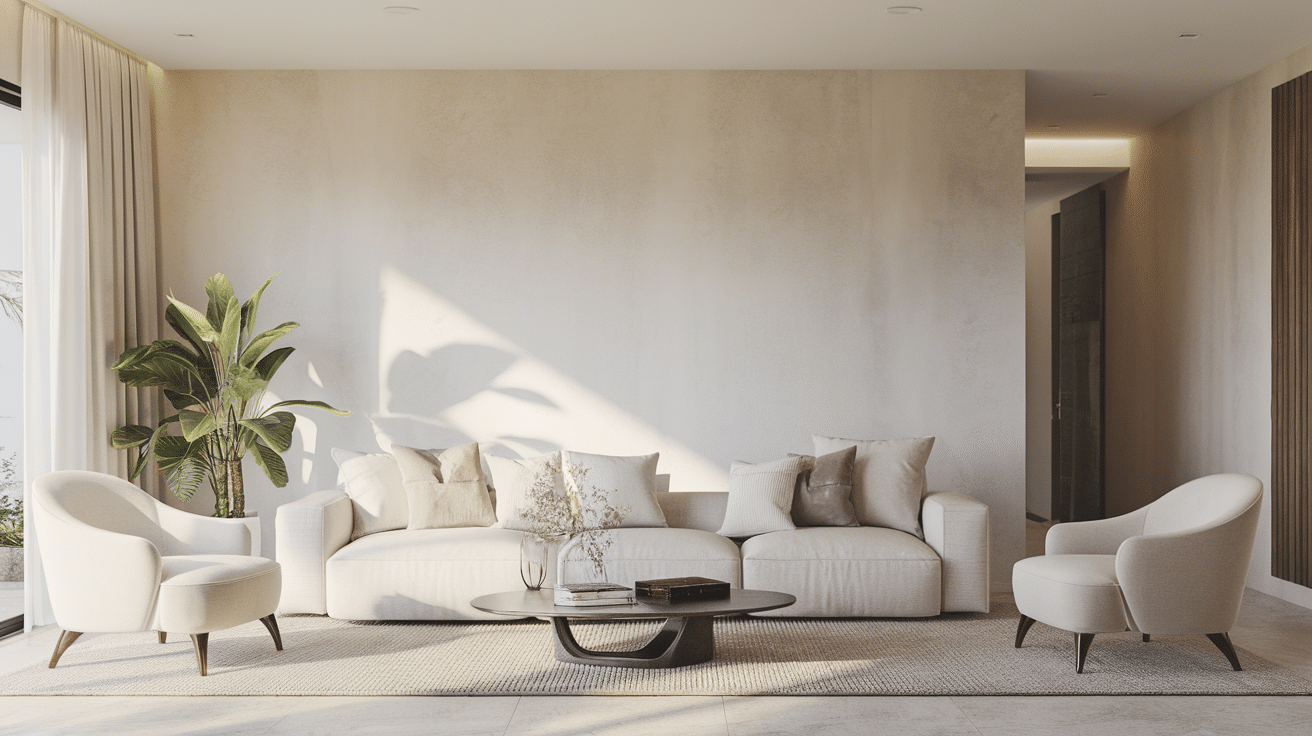
Smooth finish is a simple, clean texture often found in modern homes. It looks flat and polished, like a plain wall with no extra pattern. This style works well with bright colors and sleek furniture.
To get a smooth finish, the wall is sanded and coated carefully. It takes more time than other textures, but the result is neat. Many people like it for living rooms and kitchens.
This texture helps reflect light evenly, making small spaces feel more open. It’s also easy to clean.
A smooth finish is a good choice if you want a simple, modern look. It works well in both homes and offices and gives the wall a neat and quiet feel.
2. Knockdown Texture
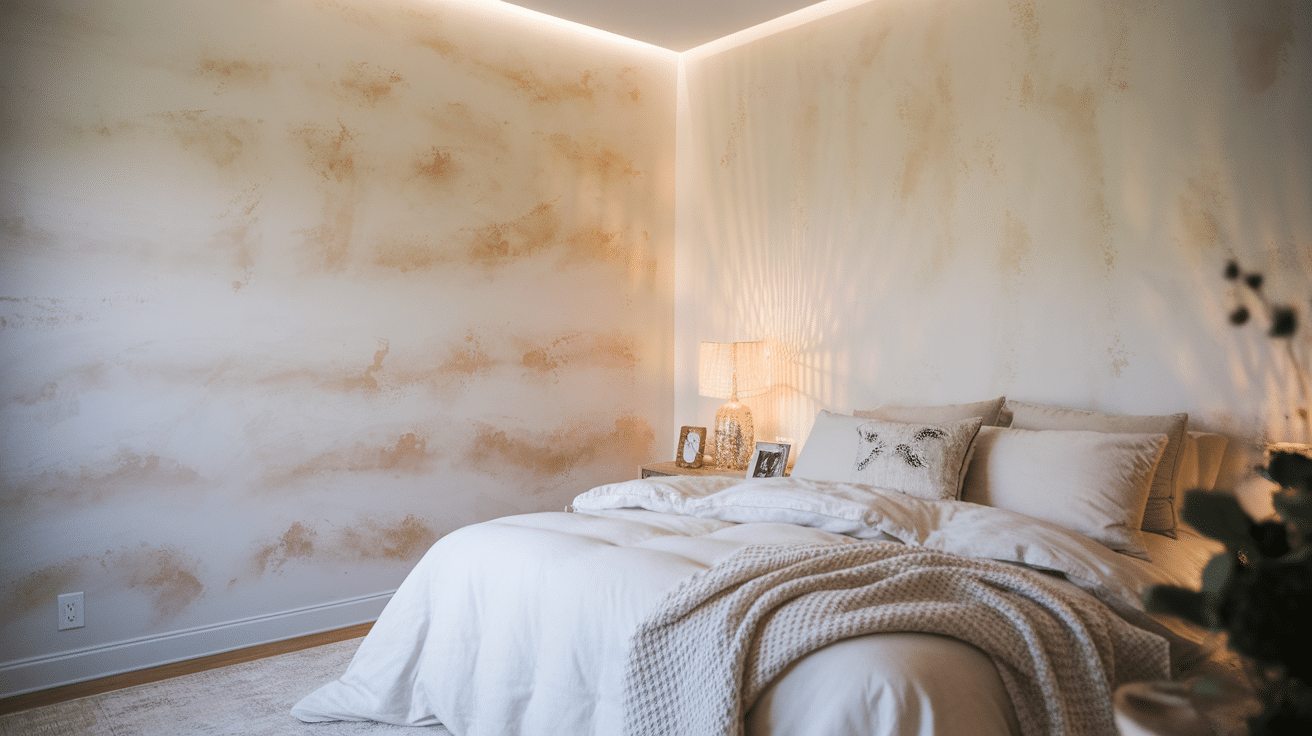
Knockdown texture starts with a layer of sprayed mud. Before it dries, the surface is lightly flattened with a wide blade. This creates a soft, uneven look that adds depth.
The texture is less sharp than a full splatter finish. It feels smooth but still has some character—many homeowners like it for ceilings and walls.
Knockdown works well in bedrooms and family rooms. It helps hide small flaws without looking too busy, and the soft pattern blends easily with most designs.
This texture offers a nice balance between flat and bold. It gives walls a relaxed, finished look. It’s a favorite for homes with a calm, clean style.
3. Orange Peel Texture
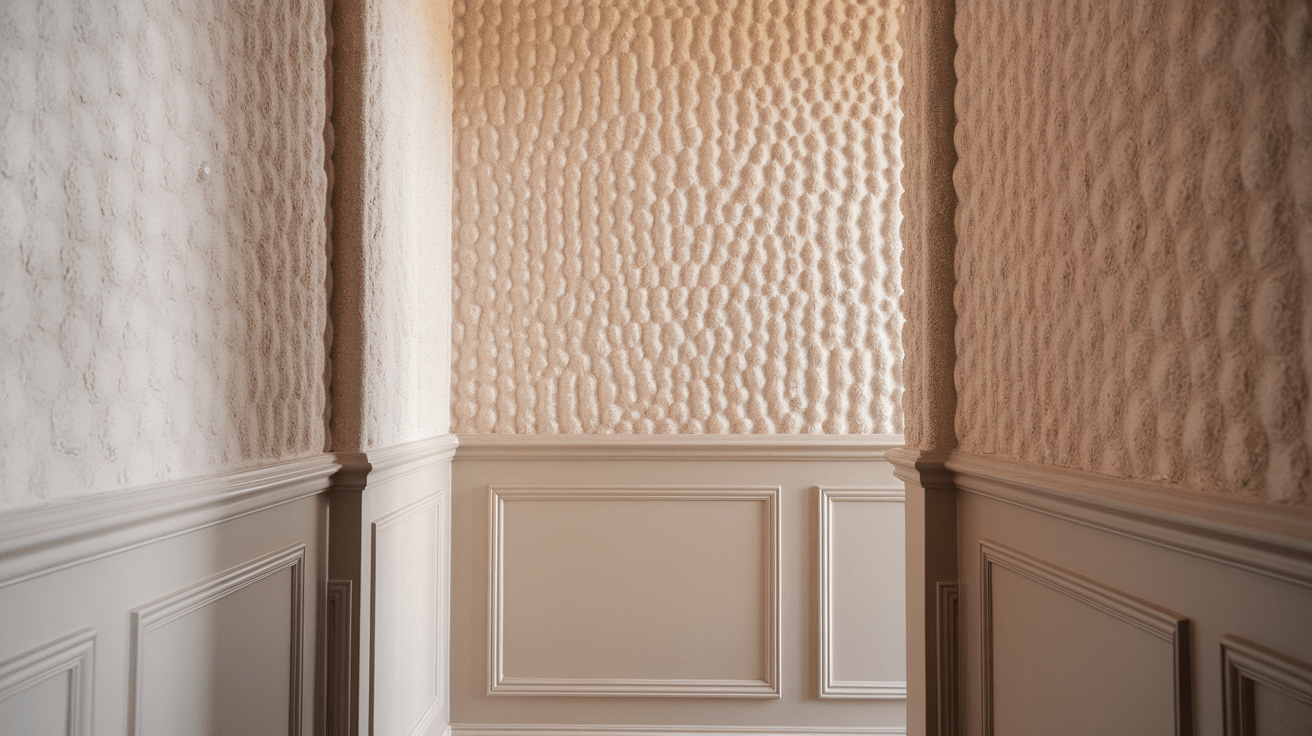
Orange peel texture looks like orange skin. It’s made by spraying a thin coat of drywall mud and letting it dry, resulting in a soft, bumpy feel.
This style is one of the most common textures. It’s popular because it hides flaws and is easy to touch up. You’ll often see it in hallways or bedrooms.
The texture adds interest without being too bold. It doesn’t collect dust or dirt easily, making it a good choice for busy homes.
Orange peel gives walls a quiet look with a bit of texture. It works in almost any room and is a safe pick for both new builds and updates.
4. Skip Trowel Texture
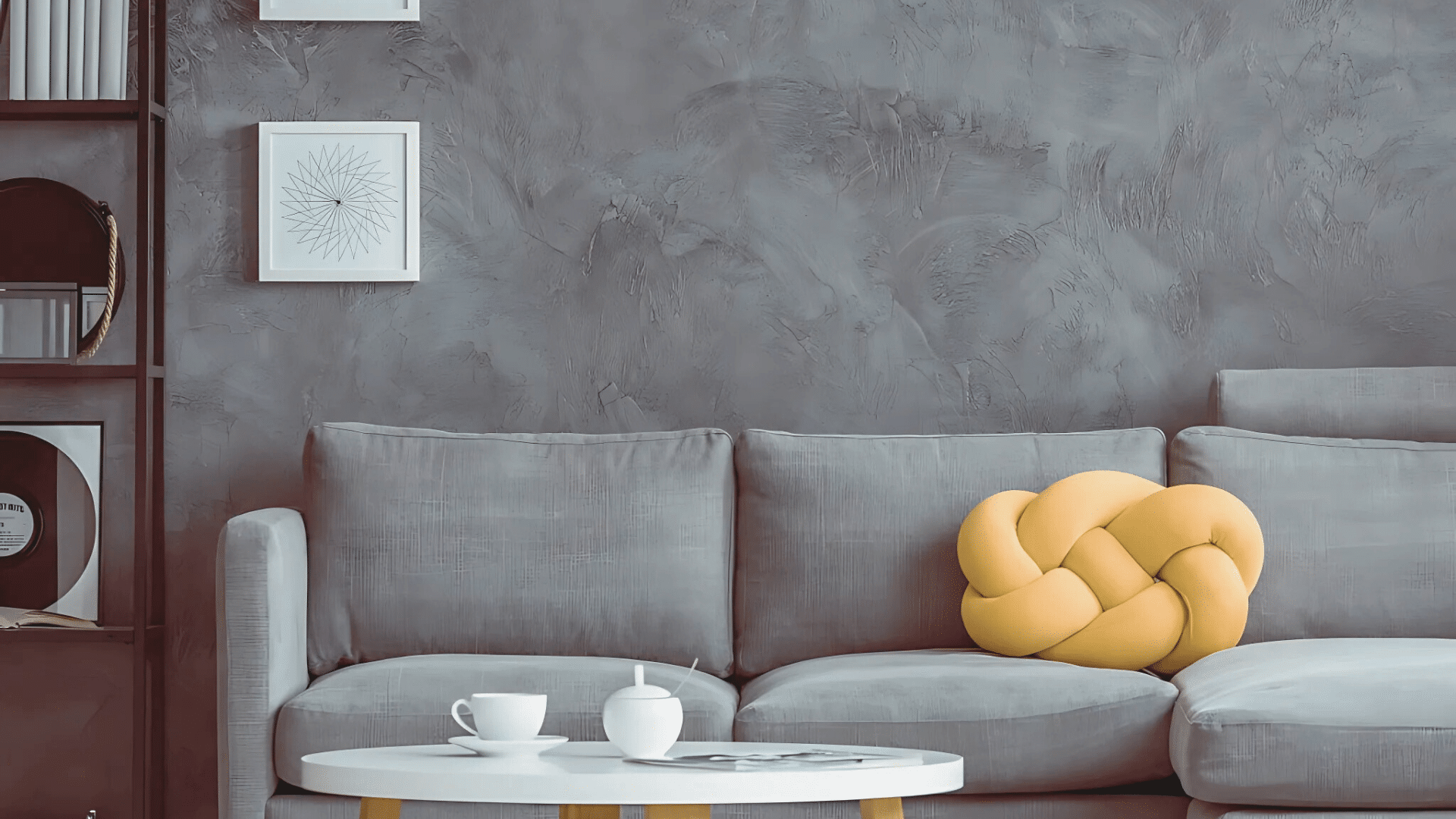
Skip trowel texture is applied by hand. A thin layer of mud is spread across the wall in a curved motion, creating random patterns and sweeping arcs.
No two skip trowel walls look the same. That’s part of what makes this texture special. It gives each wall a personal, handmade feel.
The raised pattern adds depth to the room. It works well in large spaces or open areas, and the texture helps reflect light in different ways.
Skip trowel is a good option for those who want a soft, creative look. It adds style without being too bold, and this texture brings movement and warmth to the space.
5. Sand Swirl Texture
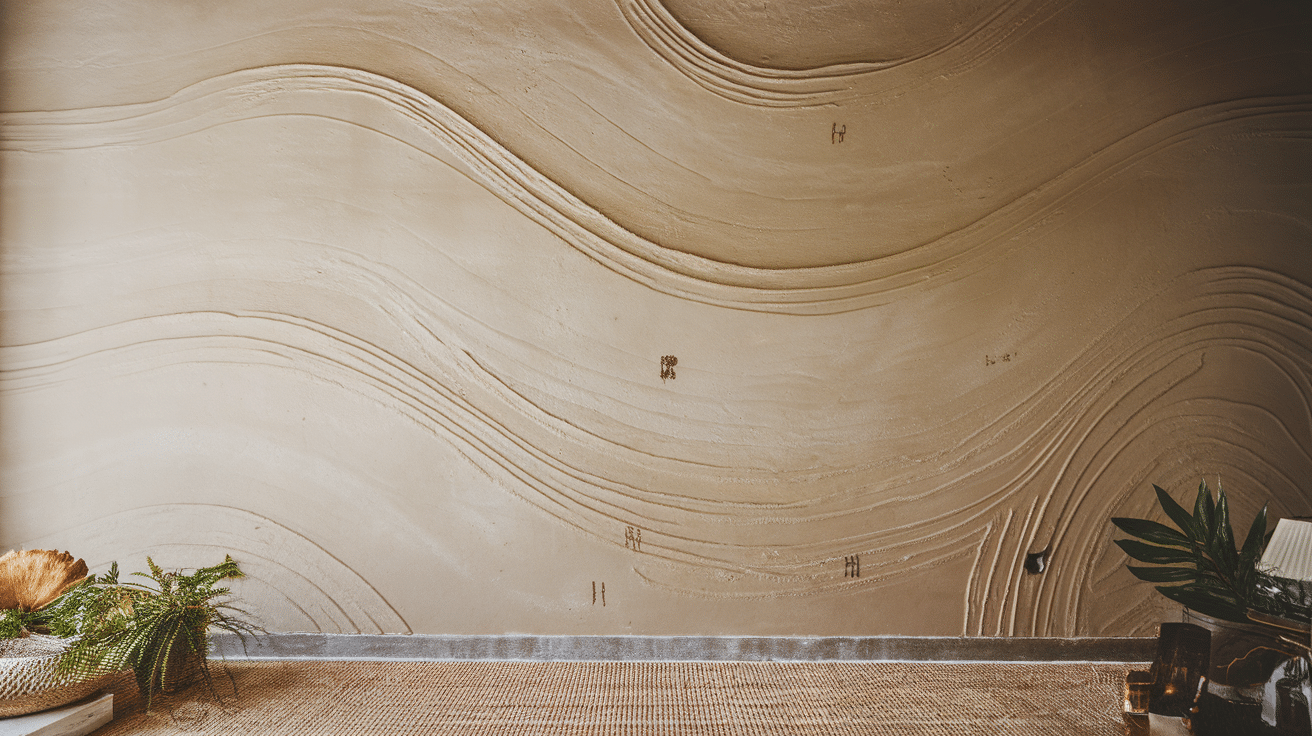
The sand swirl texture has soft, circular, or semi-circle patterns across the wall. It’s made by adding sand to joint compound and applying it in swirls with a brush. The result is a light, flowing design.
This texture works well in large rooms or hallways. The swirls bring movement without making the wall feel too busy. It’s a mix of pattern and softness.
A sand swirl also helps hide small wall flaws. It spreads light gently, which makes the room feel calm. It’s a good choice for open, airy spaces.
If you want something simple but not flat, sand swirl is a great option. It adds a soft touch while staying neat, and the curved lines make the walls look more alive.
6. Popcorn Texture
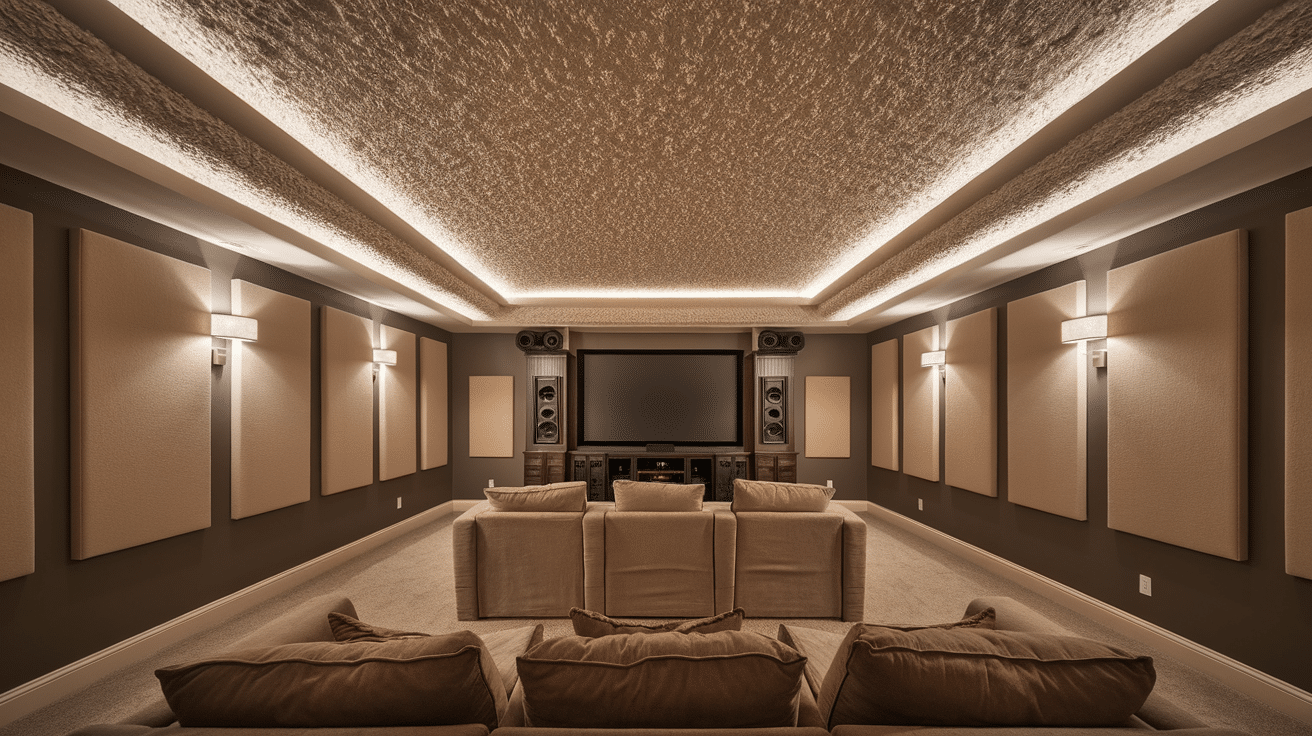
The popcorn texture is known for its thick, bumpy look. It was once common on ceilings but is now used more for sound control. It absorbs sound well and helps quiet down noisy rooms.
It’s made by spraying a mix of drywall mud and small foam or paper pieces on a surface that looks rough and puffy. It’s not often used on walls anymore.
While not as popular in style, it works well in media rooms and basements. It cuts down echo and creates a softer sound, which is why people still use it in modern builds.
Popcorn texture isn’t always about looks—it’s about function. If sound is an issue, this texture may help. Keep it to ceilings for a cleaner style.
7. Comb Texture
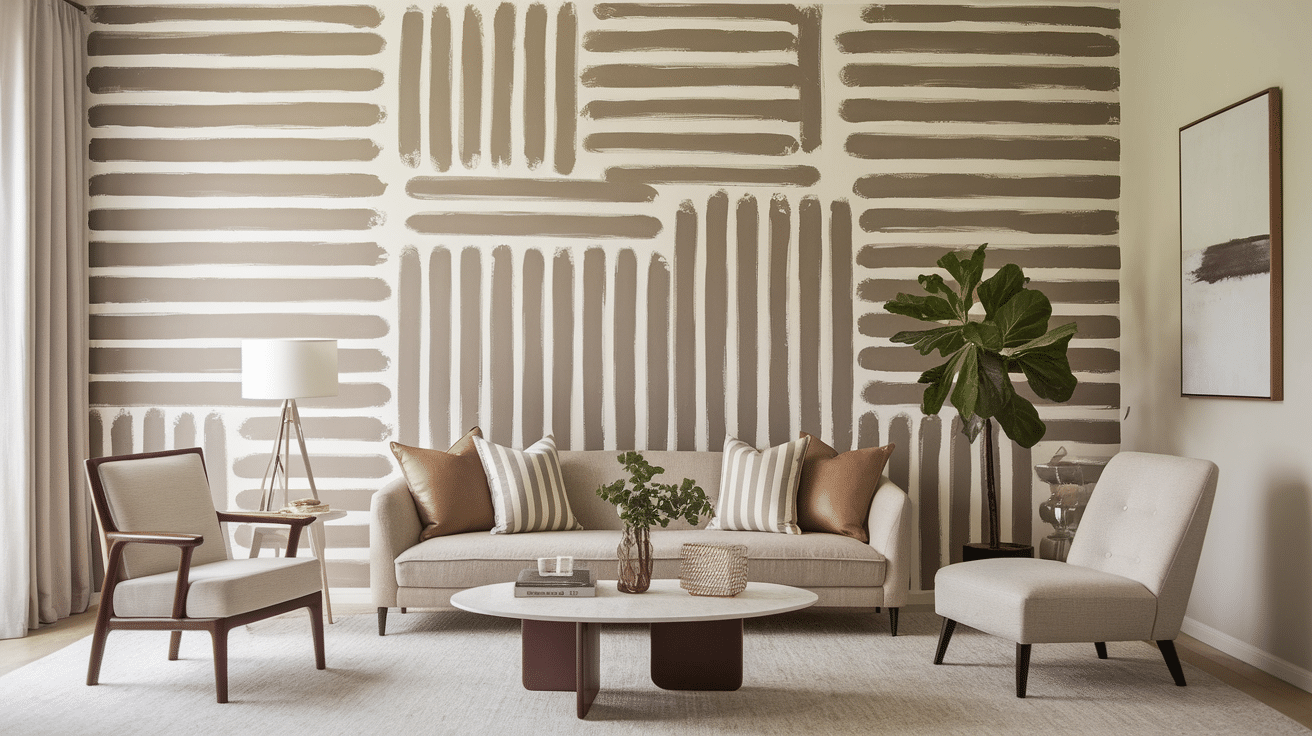
Comb texture is created by running a toothed tool through wet mud. The tool forms repeating lines or arcs across the surface, which can be straight, curved, or layered in patterns.
This style stands out more than softer textures. It works best as an accent wall or in creative rooms. The patterns are bold but tidy.
Comb texture can match modern, geometric design themes. The spacing and shapes can be changed to fit your taste. It adds visual rhythm to the wall.
If you like clear and bold design, comb texture is worth trying. It brings pattern into the room without adding color. It’s neat, planned, and creative.
8. Slap Brush Texture
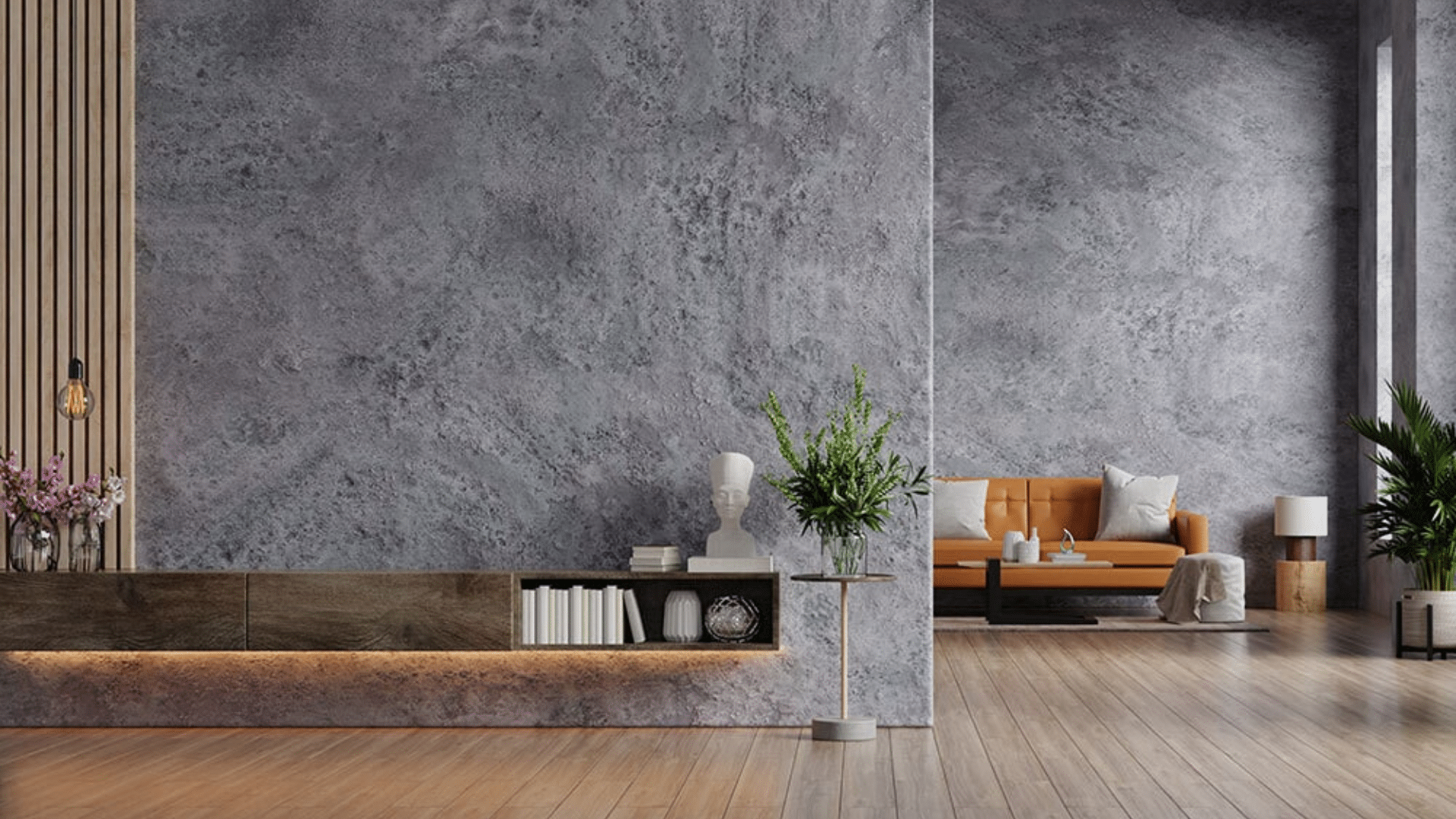
The slap brush texture has a wild, stamped look. A brush is dipped in joint compound and slapped lightly on the wall, making a random pattern with soft spikes or fans.
This texture adds movement and covers wall flaws well. It’s great for busy family spaces or ceilings. The raised spots catch light in interesting ways.
A slap brush can be used with paint for added detail. It blends well in both modern and classic homes, and you’ll often see it in hallways or large rooms.
This texture gives walls a casual, handmade feel. It’s bold without being too messy. A slap brush is a good pick if you want texture with personality.
9. Crow’s Foot Texture
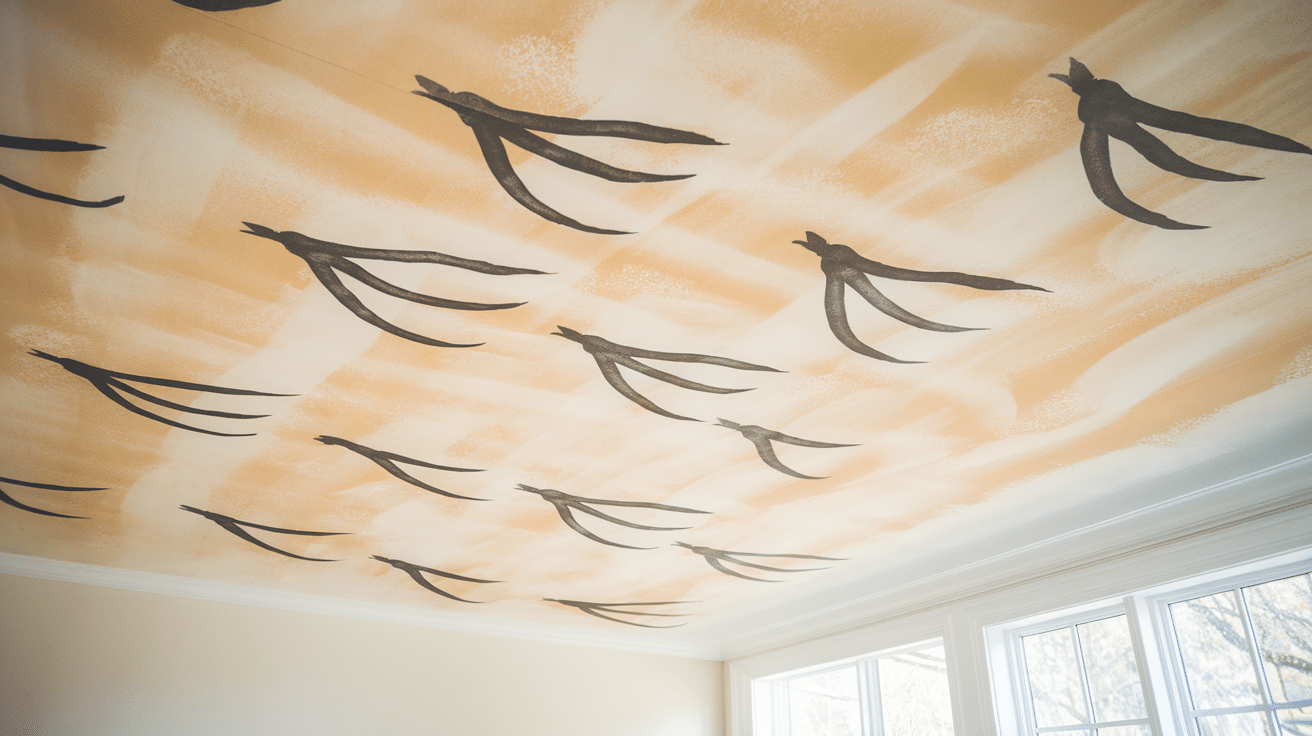
Crow’s foot texture is made using a brush with stiff bristles. The brush is pressed into wet compound to create marks that resemble bird tracks. It’s often applied in pairs for a balanced look.
This texture gives more definition than slap brush. The patterns are spread evenly across the surface. It’s bold but still controlled.
It works well on ceilings or large walls. The added depth helps hide surface flaws. It also plays with shadows to add interest.
Crow’s foot is a good pick if you want something detailed but not too messy. It gives energy to a room without taking over. Great for homes that want a touch of texture.
10. Spanish Lace Texture
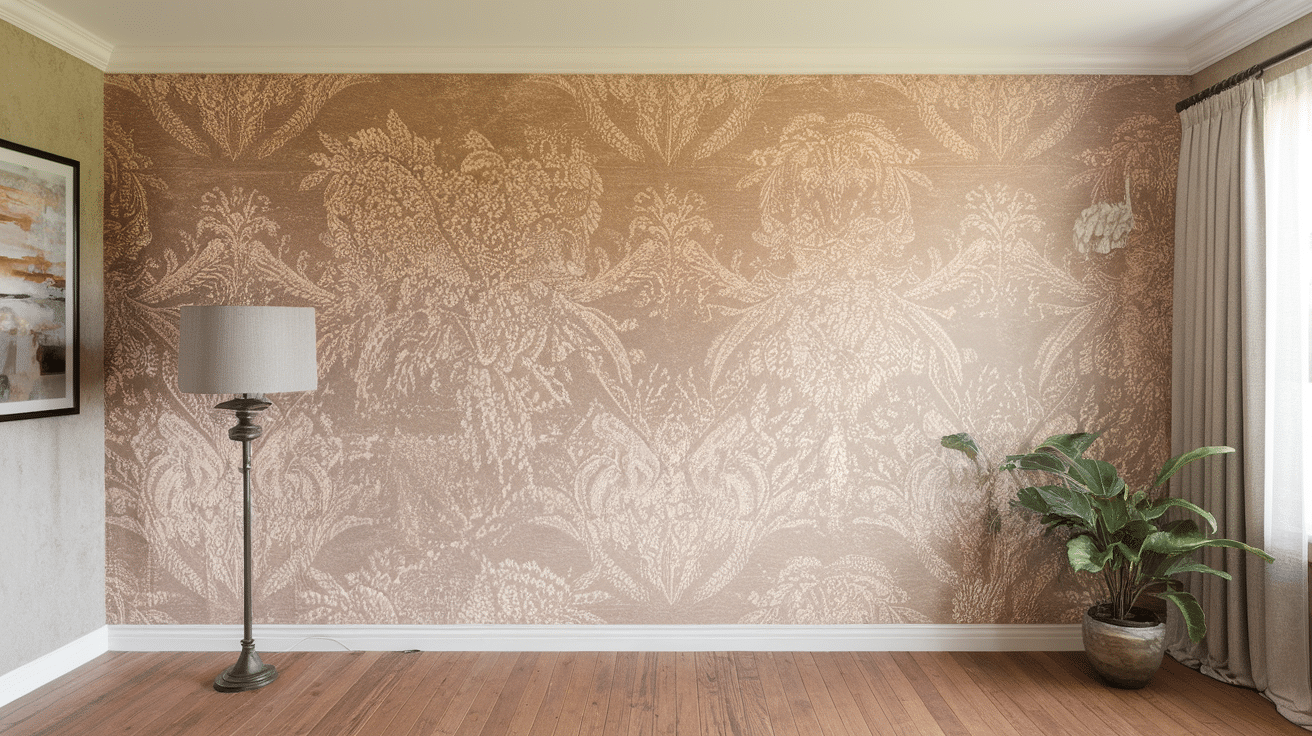
Spanish lace texture creates a lace-like pattern on walls or ceilings. It’s made by spraying joint compound and then knocking down parts of it. This forms a mix of raised and flat areas.
The finished result looks like delicate lace or stucco. It has both smooth and rough parts, adding depth. The pattern feels well-planned but still organic.
This texture is often used in homes with classic or Mediterranean style. But it still fits modern spaces if used lightly. It works well on accent walls or ceilings.
If you want texture that looks detailed and handmade, Spanish lace is a strong option. It adds interest without being too heavy. A great choice for timeless design.
11. Rosebud Texture
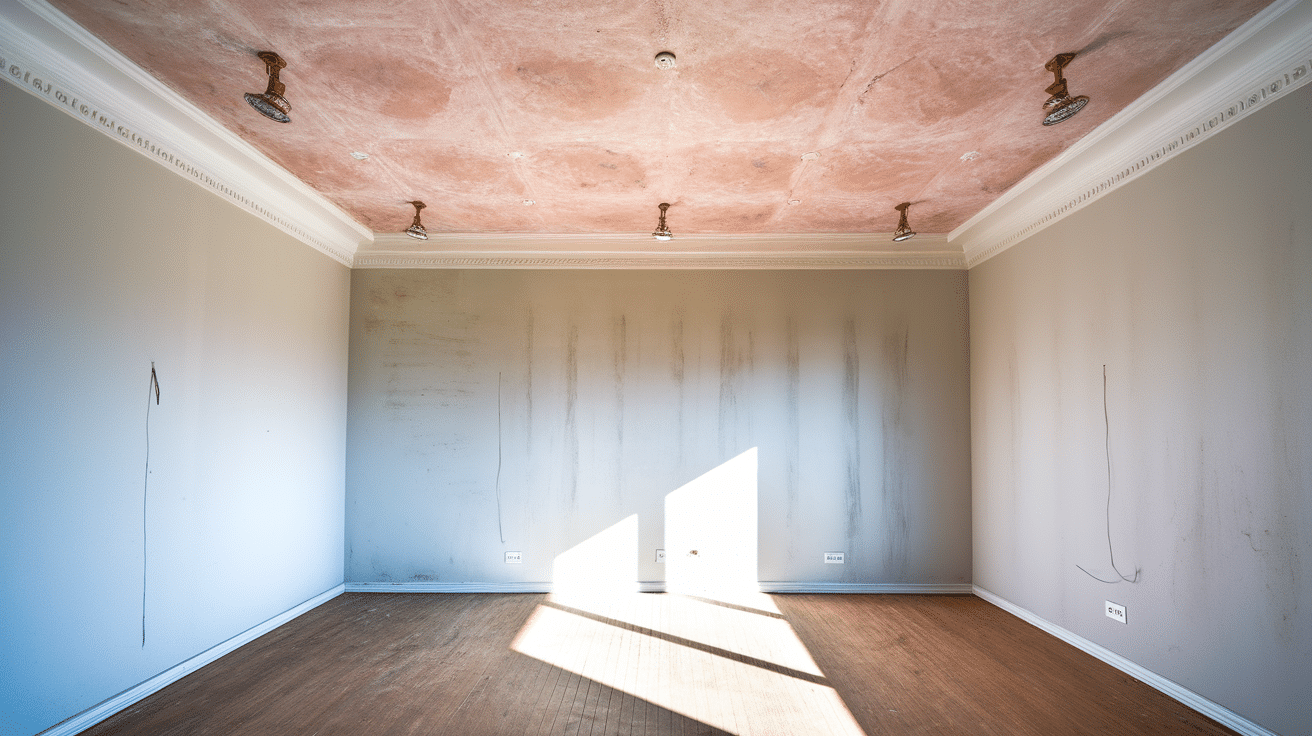
Rosebud texture gets its name from the flower-like shapes it creates. A brush or stomp pad is pressed into joint compound in repeating motions. Each press leaves a soft, petal-like pattern.
This texture is more decorative than many others. It’s great for ceilings or gentle accent areas. It covers imperfections while adding charm.
Rosebud works best in rooms where you want a cozy or soft look. The repeating blooms are subtle and don’t distract too much. Light colors help show off the shapes.
Rosebud texture is simple to apply and adds a floral touch to your home. If you want pattern without bold lines, this is a nice middle ground.
12. Spray Sand Texture
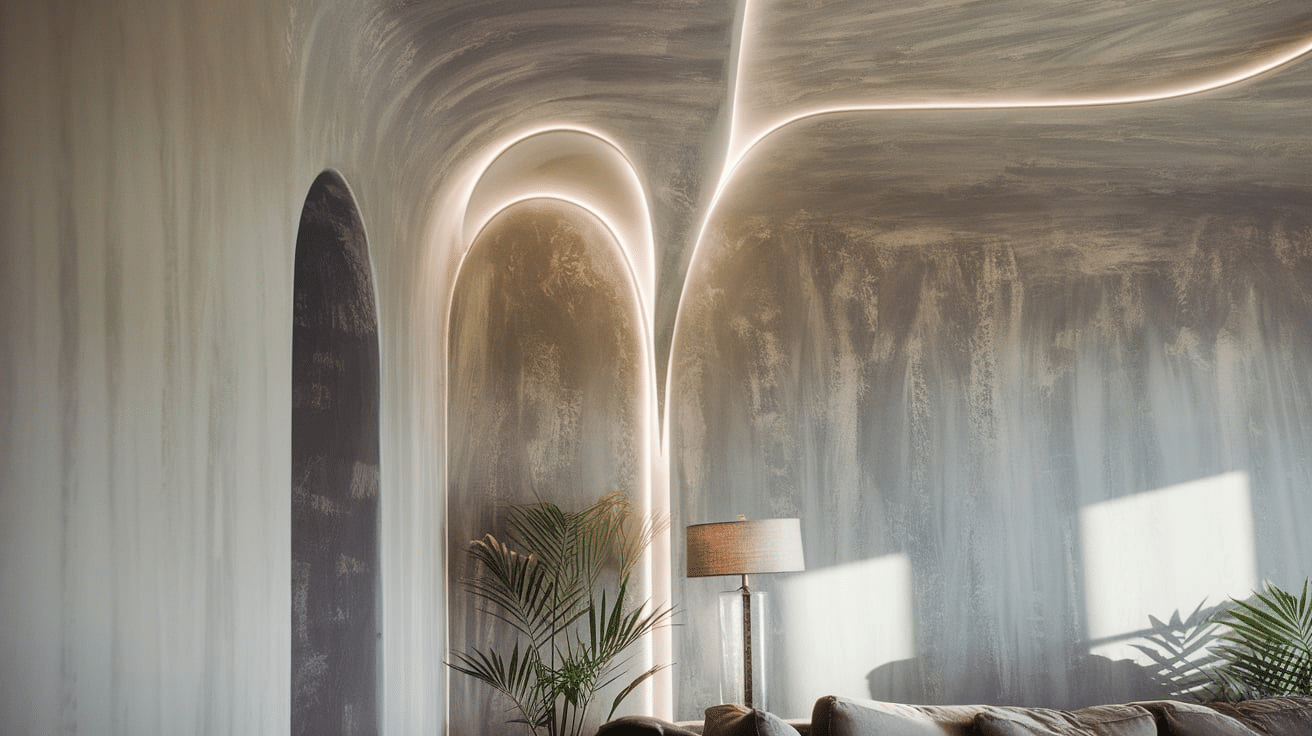
Spray sand texture has a fine, grainy look. It’s made by mixing sand into the compound and spraying it on the surface. The result is soft and lightly bumpy.
This texture is much more subtle than most. It adds a matte feel without making the wall look rough. It’s great for soft, clean finishes.
Spray sand hides minor wall flaws. It reflects light gently and blends into most styles. Many people use it for ceilings or light-filled rooms.
If you like smooth finishes but want just a hint of texture, spray sand works well. It’s clean, easy to maintain, and suits many room types.
13. Hawk and Trowel Texture
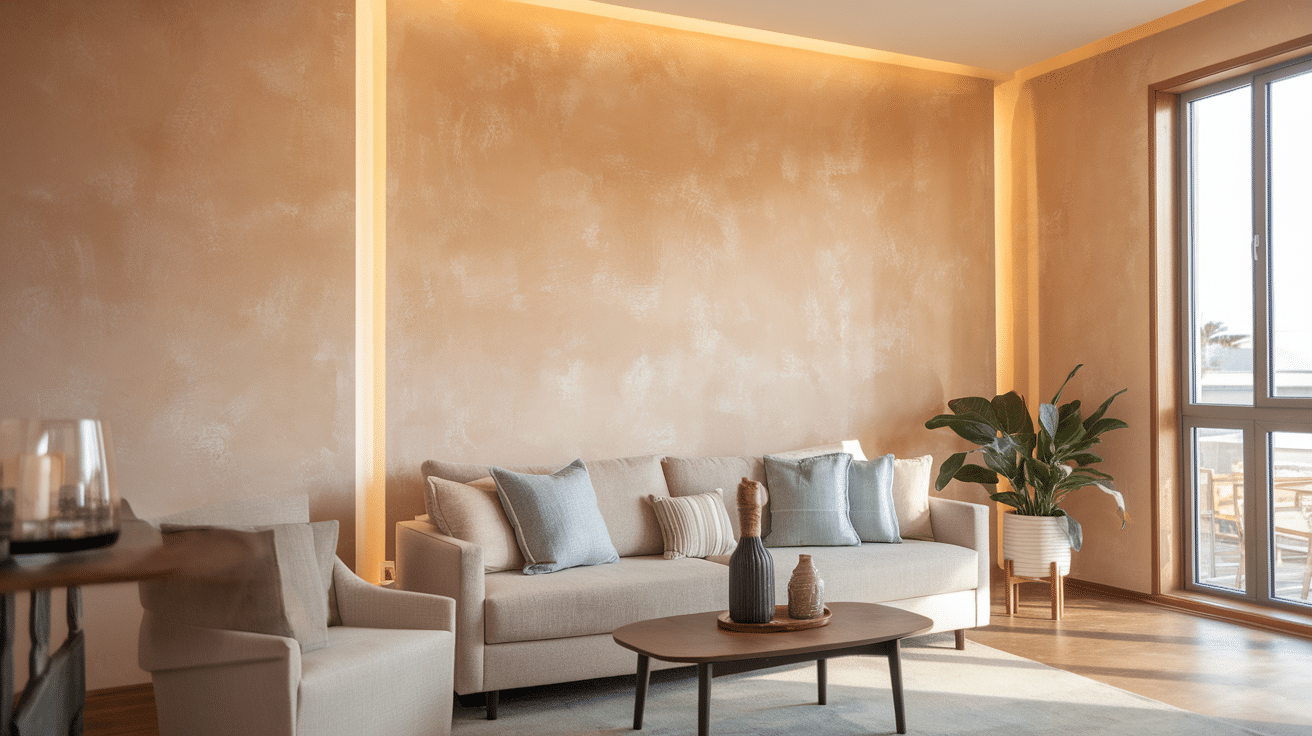
Hawk and trowel texture is applied by hand using two tools—a hawk to hold the material and a trowel to spread it. The finish depends on how the material is layered and moved. No two walls look exactly the same.
The texture often forms wide, sweeping strokes or soft ridges. These lines give the wall a handmade feel. It’s often used in high-end custom homes.
This style works well in large rooms or open spaces. It adds depth without looking too busy. Paint with soft colors enhances its layered look.
Hawk and trowel gives a strong, artistic feel. If you want texture that feels crafted and personal, this is a great option.
14. Venetian Plaster Finish
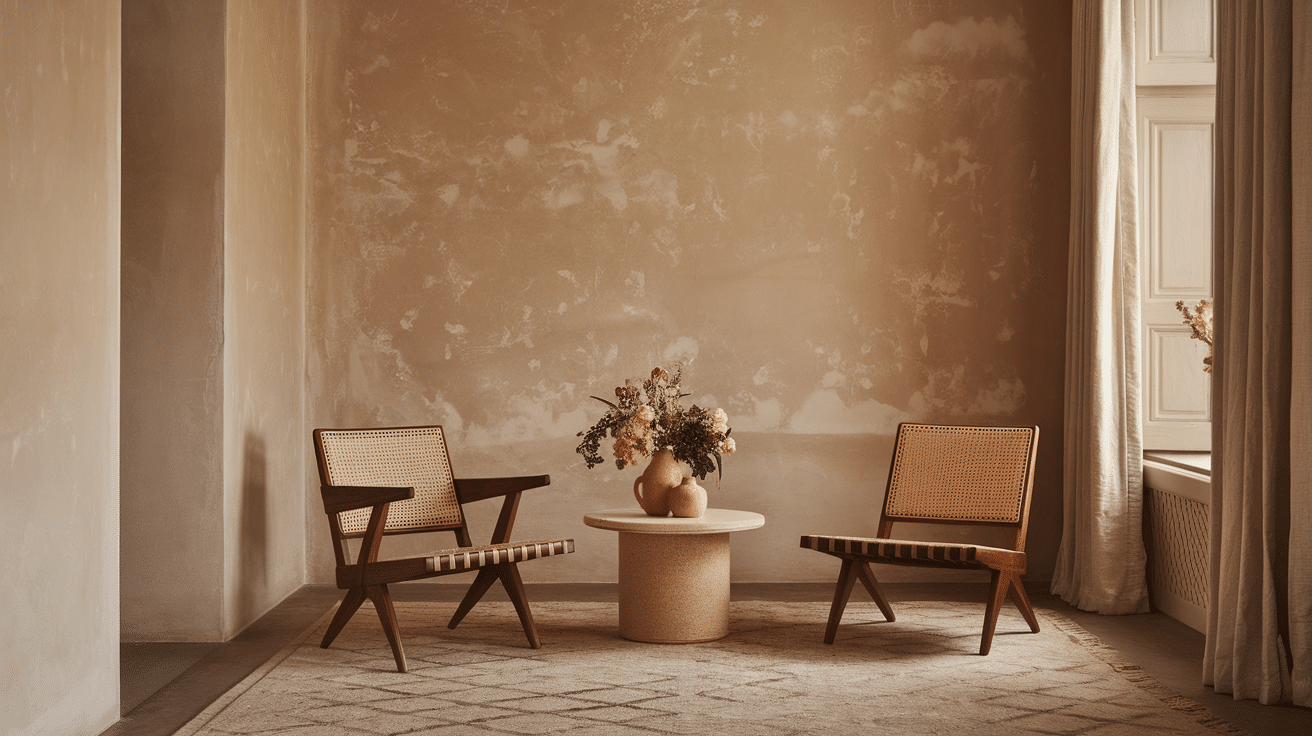
Venetian plaster is known for its polished surface and soft depth. It uses thin layers of plaster, applied and smoothed with a trowel. Once dry, it’s often burnished to create a light shine.
The finish may look like smooth stone or marble. It reflects light in soft, shifting tones. Though flat to the touch, it has deep visual texture.
This texture fits well in quiet, refined spaces. It can be subtle or dramatic, depending on the color and finish. It’s also durable and easy to clean.
Venetian plaster gives a smooth surface with rich depth. It’s ideal for people who want a soft look that still feels special.
15. Slap Brush Knockdown
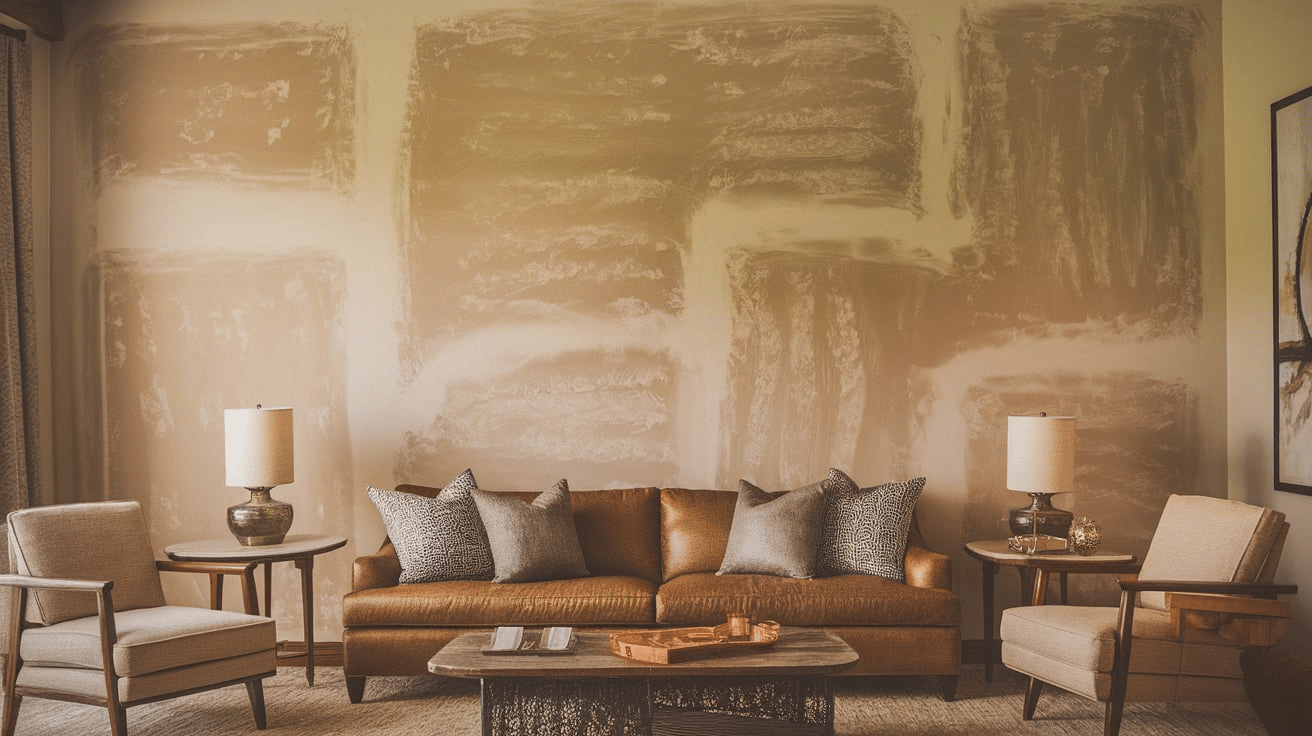
Slap brush knockdown starts like slap brush, using a round brush to stamp joint compound. Once dry for a few minutes, it’s lightly smoothed with a knife. The result is a mix of bold shapes and soft edges.
This texture looks detailed but not too rough. The knocked-down areas add depth while the raised parts give shape. It hides flaws well without being heavy.
It’s often used in busy areas like hallways or family rooms. The texture stays interesting without becoming distracting. It’s also easy to patch if needed.
Slap brush knockdown gives a nice blend of energy and smoothness. It’s good for homes that want some texture without full drama.
16. Swirl Knockdown
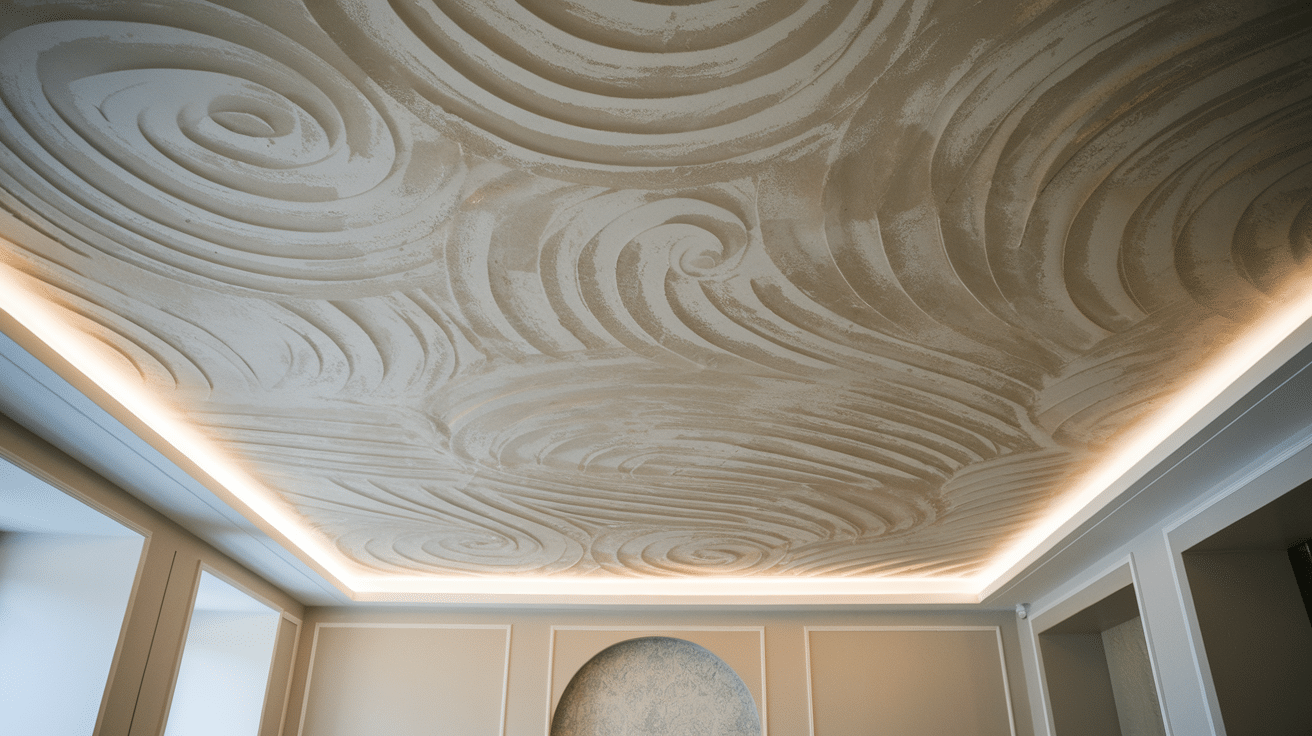
Swirl knockdown is made by applying swirls of compound, then smoothing them slightly. The swirls stay visible but less raised. It combines motion and softness in one design.
This texture brings curves and flow to walls or ceilings. The swirls can be small or wide, depending on your tools. It’s more subtle than full swirl textures.
It’s often found in older homes but can work in modern ones too. Lighter colors help show off the swirl without overpowering the room. It adds quiet movement to a flat wall.
Swirl knockdown is a gentle way to add shape. It’s good for people who want motion without heavy texture.
Tips for Choosing the Right Drywall Texture
Picking the best drywall texture depends on more than just looks. You need to think about the room’s use, lighting, and furniture style. These simple tips can help you make the right choice.
1. Think about the room’s lighting and purpose
Rooms with lots of light can handle more texture without feeling too heavy. Light hits raised textures and creates shadows that add depth. In darker rooms, too much texture may make the space feel smaller.
The purpose of the room also matters. A quiet bedroom might do better with a soft, smooth finish. A bold texture could be distracting or feel too loud.
In busy areas like hallways or kitchens, stronger textures can hide small marks or smudges. This makes cleanup easier and keeps the walls looking fresh longer. Always think about how the room is used before choosing a style.
2. Match texture boldness with furniture style
If your furniture has strong lines or bold shapes, a smoother wall keeps the space balanced. Too much texture can clash and make the room feel crowded. Balance helps everything work together.
In rooms with simple furniture, textured walls can add interest. This helps the space feel complete without adding more decor. A little texture can make plain areas stand out.
You don’t have to match everything exactly. Just keep the textures and furniture in the same mood—soft with soft, bold with bold. This helps the space feel well thought out.
3. Use subtle textures in smaller or low-light spaces
Small rooms can feel even tighter with heavy textures. Subtle styles like smooth finish or light orange peel keep things open. These options reflect light better and brighten up the space.
Low-light spaces do better with flat or soft textures. Harsh patterns might create shadows that make the room feel dim. Soft walls help spread what little light there is.
Keep things simple where space or light is limited. Less texture can make a big difference. It keeps the room from feeling closed in or too busy.
4. Bolder textures work well in living rooms or feature walls
Living rooms can handle bold styles like knockdown or skip trowel. These textures add movement and interest without overpowering the space. They’re perfect for making a statement.
Feature walls are a great place to use bold textures. They help draw the eye and create a natural focal point. You can frame fireplaces, TV walls, or large pieces of art this way.
Don’t overdo it—use bold textures in one or two places. This keeps the look clean and focused. The rest of the room can stay smooth or lightly textured for balance.
Conclusion
There are many drywall textures to choose from. This blog covered modern types that can change how a room feels and looks. Each one has its own shape, style, and purpose.
Before making a final choice, try out samples. Testing a texture on a small wall or board helps you see how it fits your space. This avoids regrets later.
Remember, texture is not just for looks. It can hide wall flaws, add depth, or improve lighting. Some even help with sound control.
Pick textures that match the room’s use and size. Keep bolder looks for larger or open areas. Use lighter styles in small or low-light spaces.
A good texture makes your walls feel finished. It adds both form and function without needing extra work.

